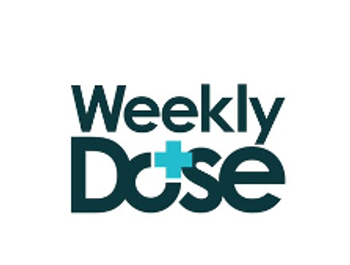
Lung Cancer Screening: Is Now the Time?
What are the pros and cons of chest CT for early screening for lung cancer? Does early detection really change outcomes? Which patients are candidates?
Q: What are the pros and cons of chest CT for early screening for lung cancer? Does early detection really change outcomes? Which patients are candidates?A: I'll begin with a historical perspective to try to answer this important question. Today, no organization or society recommends screening for early-stage lung cancer--not even in persons at highest risk, such as those with a history of heavy cigarette smoking or occupational exposure. In my view, this position is wrong. It is based on inadequate and severely flawed studies sponsored by the National Cancer Institute in the mid 1970s. These trials did not screen high-risk groups. Moreover, the control arm of the studies was often contaminated by the continued use of annual chest radiography. Because of the older technology then in use, many cancers were missed.With the development of newer technologies, such as low-dose CT and electron beam tomography, the issue of screening is being revisited--and wisely so. I have presented the rationale for screening along with case findings in high-risk patients in recent publications.1,2 We know thatpersons with a significant smoking history--say, 30 pack-years--and airflow obstruction on simple spirometry have 4 to 6 times the incidence of lung cancer compared with persons who have similar smoking histories and family and occupational risks but normal lung function. These persons are ideal candidates for screening (Table).Dual screening. CT scanning, however, is not enough. Although it finds the small, peripheral lesions, it may miss central lesions; these can be identified by sputum cytology. Thus, dual screening is required. If a smoker older than 45 years has even mild airflow obstruction--ie, the ratio of forced expiratory volume in 1 second (FEV1) to forced vital capacity is less than 70%--he or she should be screened with CT and sputum cytology.3 In smokers with even mild reductions in FEV1, sputum cytology will reveal lung cancer in 2%.4 This is a huge yield compared with positive mammographic findings of 0.5% in high-risk women.The recommendation for sputum cytology screening is based on results of studies of a patient cohort in Grand Junction, Colo, which showed that most cancers found by this technique are at an early stage.5,6 The 5-year survival of patients treated for cure by surgery or radiation therapy in this cohort was greater than 50% (including all-cause mortality).6 The overall 5-year survival of patients with cancer diagnosed by accident or because of symptoms is only 15%.7CT also finds lung cancer in about 2% to 3% of high-risk patients screened,8 usually at an early and more curable stage. Prospective follow-up studies are under way to ascertain the survival of patients with CT-identified lung cancer.9Screening protocols. How often to screen depends on the level of risk and the findings on initial examination. My general recommendations are as follows:
- Annual dual screening with CT and sputum cytology for high-risk patients inwhom no abnormalities or indeterminate lesions are found on initial evaluation.
- Repeat testing for those with small (ie, less than 5 mm) lesions or mild to moderate dysplasia on sputum cytology.
- Follow-up at 3- to 6-month intervals for small (ie, less than 5 mm) lesions.
- Biopsy and staging for larger suspicious lesions.
Controlled randomized trials are appropriate for chemotherapy and chemoprevention issues; they may even be acceptable in a random population (assuming anyone wanted to do such a study). However, such trials are not appropriate for the high-risk groups defined above. The results we already have show increased survival at 5 years--the yardstick used for all other cancers. It is clear that we have the knowledge and technology to find, treat, and cure early-stage lung cancer right now.Some critics are concerned about overdiagnosis, but recent studies show that false-positive results--ie, benign lesions--are not common.
10
These lesions are usually manageable without biopsy. Compared with no screening, early screenings permit diagnosis at substantially earlier stages, when disease is more curable.
References:
REFERENCES:
1.
Petty TL. Screening strategies for early detection of lung cancer: the time is now.
JAMA.
2000;284:1977-1980.
2.
Petty TL. The early diagnosis of lung cancer.
Dis Mon.
2001;47:201-264.
3.
Swensen SJ, Jett JR, Sloan JA, et al. Screening for lung cancer with low-dose spiral computed tomography.
Am J Respir Crit Care Med.
2002;165:508-513.
4.
Kennedy TC, Proudfoot SP, Franklin WA, et al. Cytopathological analysis of sputum in patients with airflowobstruction and significant smoking histories.
Cancer Res.
1996;56:4673-4678.
5.
Bechtel J, Kelley WR, Petty TL, et al. Outcome of 51 patients with roentgenographically occult lung cancerdetected by sputum cytologic testing: a community hospital program.
Arch Intern Med.
1994;154:975-980.
6.
Bechtel JJ, Petty TL, Saccomanno G. Five year survival and later outcome of patients with x-ray occultlung cancer detected by sputum cytology.
Lung Cancer.
2000;30:1-7.
7.
Landis SH, Murray T, Bolden S, Wingo PA. Cancer statistics 1999.
CA Cancer J Clin.
1999;49:8-31.
8.
Henschke CI, McCauley DI, Yankelevitz DF, et al. Early Lung Cancer Action Project: overall design andfindings from baseline screening.
Lancet.
1999;354:99-105.
9.
Henschke CI, Naidich DP, Yankelevitz DF, et al. Early Lung Cancer Action Project: initial findings on repeatscreenings.
Cancer.
2001;92:153-159.
10.
Heffner JE, Silvestri G. CT screening for lung cancer-is smaller better?
Am J Respir Crit Care Med.
2002;165:433-434.
11.
Petty TL. Early screening for lung cancer: weighing in on the controversy.
Consultant.
2001;41:957-961.
Newsletter
Enhance your clinical practice with the Patient Care newsletter, offering the latest evidence-based guidelines, diagnostic insights, and treatment strategies for primary care physicians.

































































































































































































































































































































